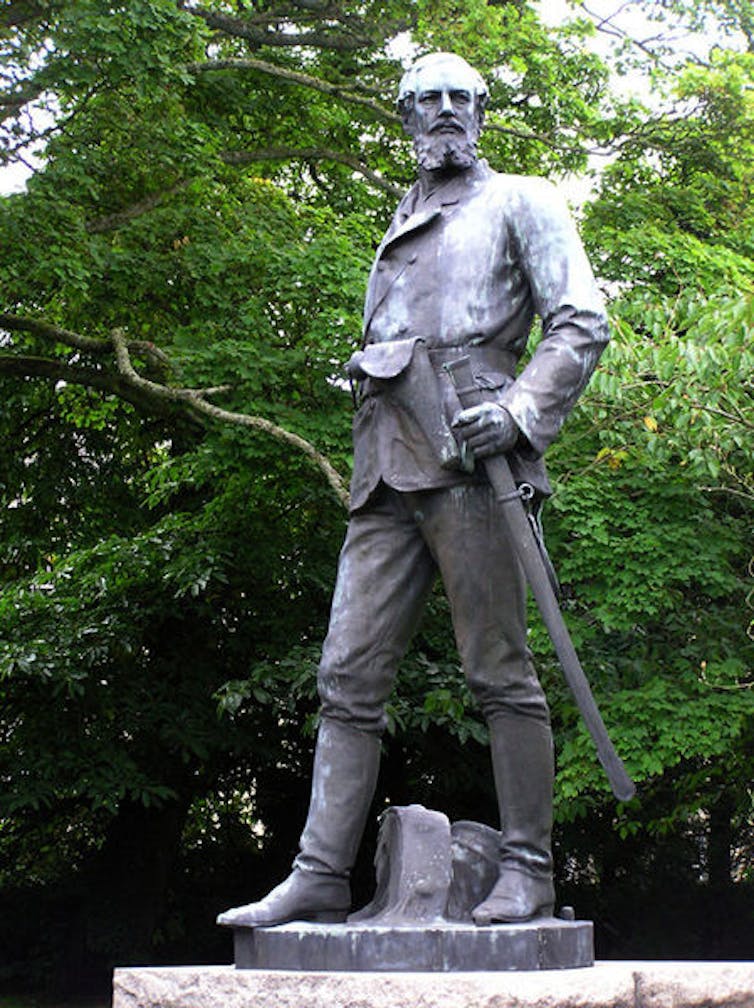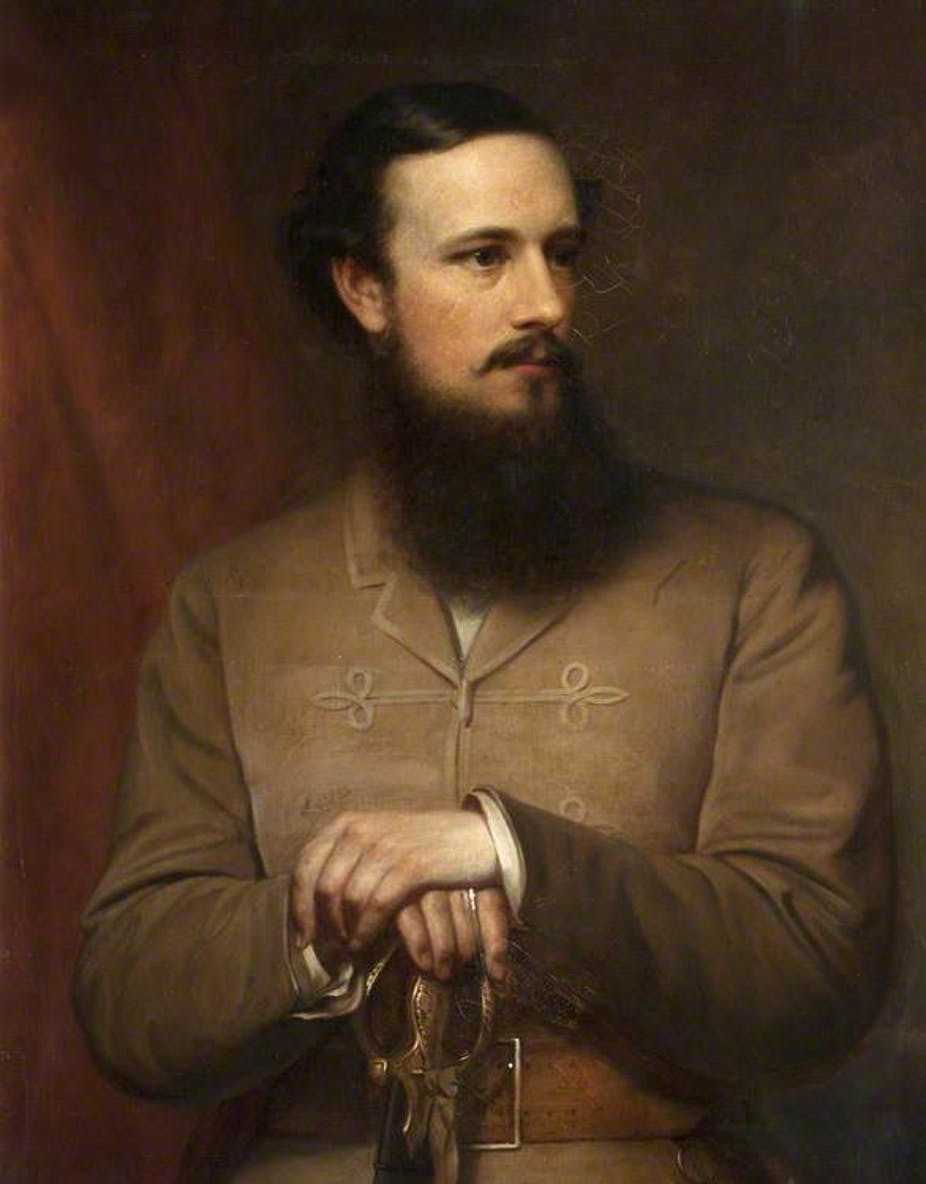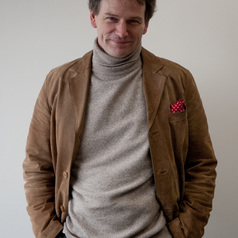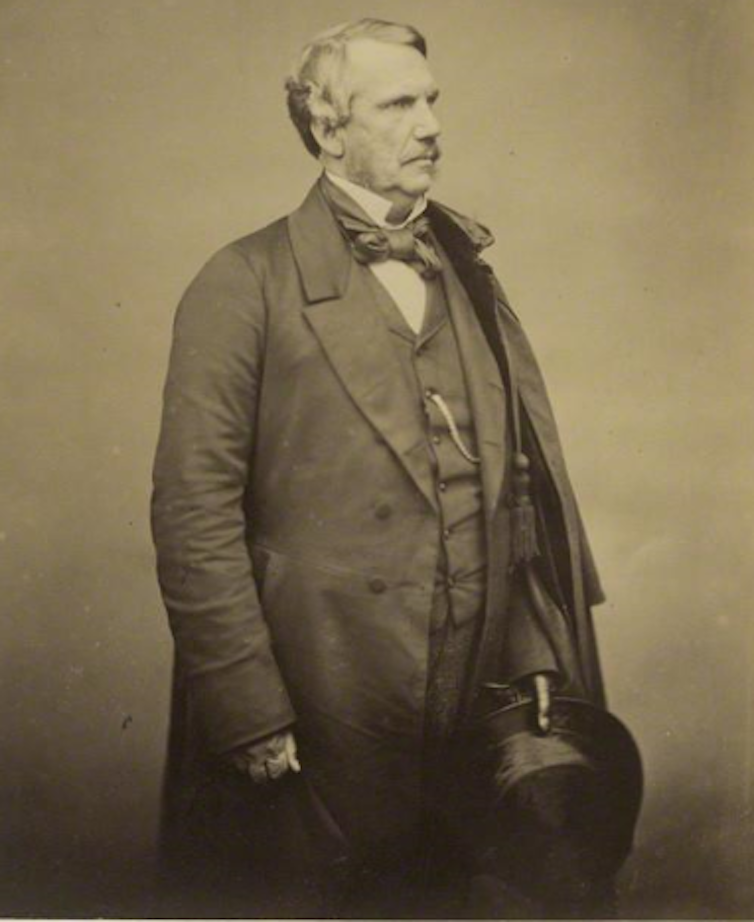It does not fall to many of us to be worshipped as a living god, but that was the fate of John Nicholson, a 19th century British army officer in the service of the East India Company. Nicholson – the subject of a new book covering his life and times – served for much of his career on the disputed and perilous northwest frontier of India and it was there that his fearsome reputation led to the creation of a religious cult dedicated to the veneration of the great god “Nikal Seyn”.
Although his colleagues were understandably amused at the spectacle, Nicholson himself – a stern Victorian Christian who read a chapter of the Bible every day – took a dim view of this idolatry and set about his devotees with a whip. This, however, merely strengthened their conviction that he was a god and the cult lingered on, long after his death and into the 21st century.
Nicholson is forgotten today but at the time he was one of a celebrated band of British officers in India, like Herbert Edwardes, James Abbott, Reynell Taylor and the Lawrence brothers (Henry and John), whose adventures made them national heroes. Their deeds and deaths are recounted in memoirs, biographies, statues and memorials, both in India and at home.

Brigadier General John Nicholson’s statue in the grounds of the Royal School Dungannon, Northern Ireland. wikipedia/KennethAllen, CC BY
A sadistic bully and a racist
Nicholson’s life was told in patriotic popular fiction and verse, including by Sir Henry Newbolt and Rudyard Kipling. But to modern eyes these military upholders of empire are problematic figures. The steely determination the Victorians so admired looks more like cruel victimising to modern eyes. The historian Charles Allen, himself related to Nicholson, tells of the difficult feelings he experienced when he first realised that his illustrious forebear was being denounced as a sadistic bully, a racist and a religious bigot.
Nicholson’s tough, uncompromising character was formed partly by his background in the north of Ireland and partly by his experiences as a prisoner during Britain’s disastrous invasion and occupation of Afghanistan in the First Afghan War (1839-42). Already quick-tempered, Nicholson emerged from this experience with a reputation, even among the hardened East India Company officer corps, for his unforgiving attitude towards Indians.
When one Indian leader spat on the ground in front of him, Nicholson, correctly perceiving it as a serious insult, had the man manhandled to the ground and forced him to lick up his own spittle. Passing a mosque one day, Nicholson noticed an imam who, engrossed with other things, had not greeted him with the customary “salaam”. He had the unfortunate man brought before him and, with his own hands, shaved his beard off – a deep humiliation for a Muslim, as Nicholson well knew.
In one of the most famous tales told of him, during the 1857 Indian Uprising and Mutiny, Nicholson personally ordered and oversaw the hanging without trial of a whole set of regimental cooks, when poison was found in the soup they had been preparing for his fellow officers.
Such stories were well calculated to please the Victorian public but they are far more problematic for people today. Where the Victorians saw a manly character embodying the virtues of the British Empire, a modern audience is more likely to see a violent bully, contemptuous of Indian life and dignity. The personification of the worst aspects of colonialism.
Sir John Lawrence thought Nicholson was too keen on humiliating Indian leaders. wikipedia
Even in his lifetime, Nicholson had his critics. Sir John Lawrence, later governor general and viceroy of India, found him difficult to work with and far too keen on confronting and humiliating Indian leaders. Others found his keenness for flogging Indians on almost any grounds – sometimes even when he did not have the authority to do so – deeply disturbing.
For Nicholson, as for all the British in India, the supreme challenge came in 1857, when a military mutiny among the “sepoys” (Indian soldiers) of the East India Company led to a full scale rebellion, which quickly spread across northern India. Nicholson seized the military opportunity with relish, leaping into action and openly expressing his contempt for any commander who did not measure up to his own demands for a speedy resolution.
He was, of course, an enthusiast of flogging, torturing and executing captured rebels. Like many of the British that year, he was incandescent with rage against the Indians – partly because of the revelations of atrocities committed against British women and children, who were murdered and their bodies mutilated. However, his vengeful hatred sprang also from outrage that Indians should dare to challenge British rule at all. He died of wounds, leading an assault to lift the siege of Delhi.
Few Victorian imperial hero figures survive the scrutiny of the post-colonial age but his lust for blood has made Nicholson particularly reviled. These “Soldier Sahibs” of British India were men of remarkable energy and drive, firm believers in the benefits of British rule and genuine in their desire to rescue India from what they saw as its backward and oppressive rulers. These attitudes no longer hold sway, of course, but no career encapsulates the deep chasm that separates modern attitudes towards colonialism from those of the Victorians quite as well as that of “Nikal Seyn”, the living god John Nicholson.



 The pandemic is still disrupting young people’s careers
The pandemic is still disrupting young people’s careers  AI is driving down the price of knowledge – universities have to rethink what they offer
AI is driving down the price of knowledge – universities have to rethink what they offer  Debate over H-1B visas shines spotlight on US tech worker shortages
Debate over H-1B visas shines spotlight on US tech worker shortages  How to support someone who is grieving: five research-backed strategies
How to support someone who is grieving: five research-backed strategies  Disaster or digital spectacle? The dangers of using floods to create social media content
Disaster or digital spectacle? The dangers of using floods to create social media content  Asian Fund Managers Turn More Optimistic on Growth but Curb Equity Return Expectations: BofA Survey
Asian Fund Managers Turn More Optimistic on Growth but Curb Equity Return Expectations: BofA Survey  Office design isn’t keeping up with post-COVID work styles - here’s what workers really want
Office design isn’t keeping up with post-COVID work styles - here’s what workers really want  Locked up then locked out: how NZ’s bank rules make life for ex-prisoners even harder
Locked up then locked out: how NZ’s bank rules make life for ex-prisoners even harder 

































